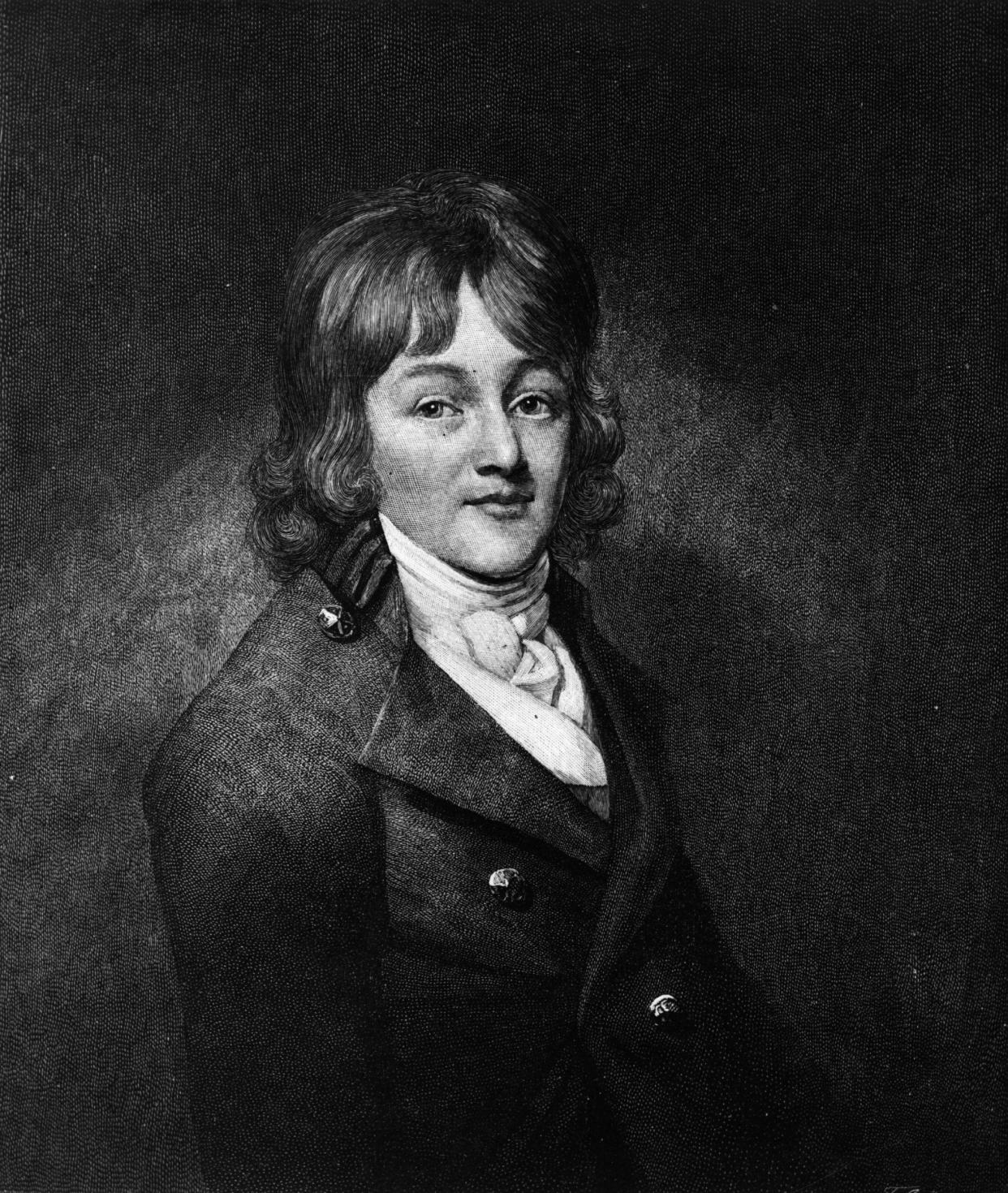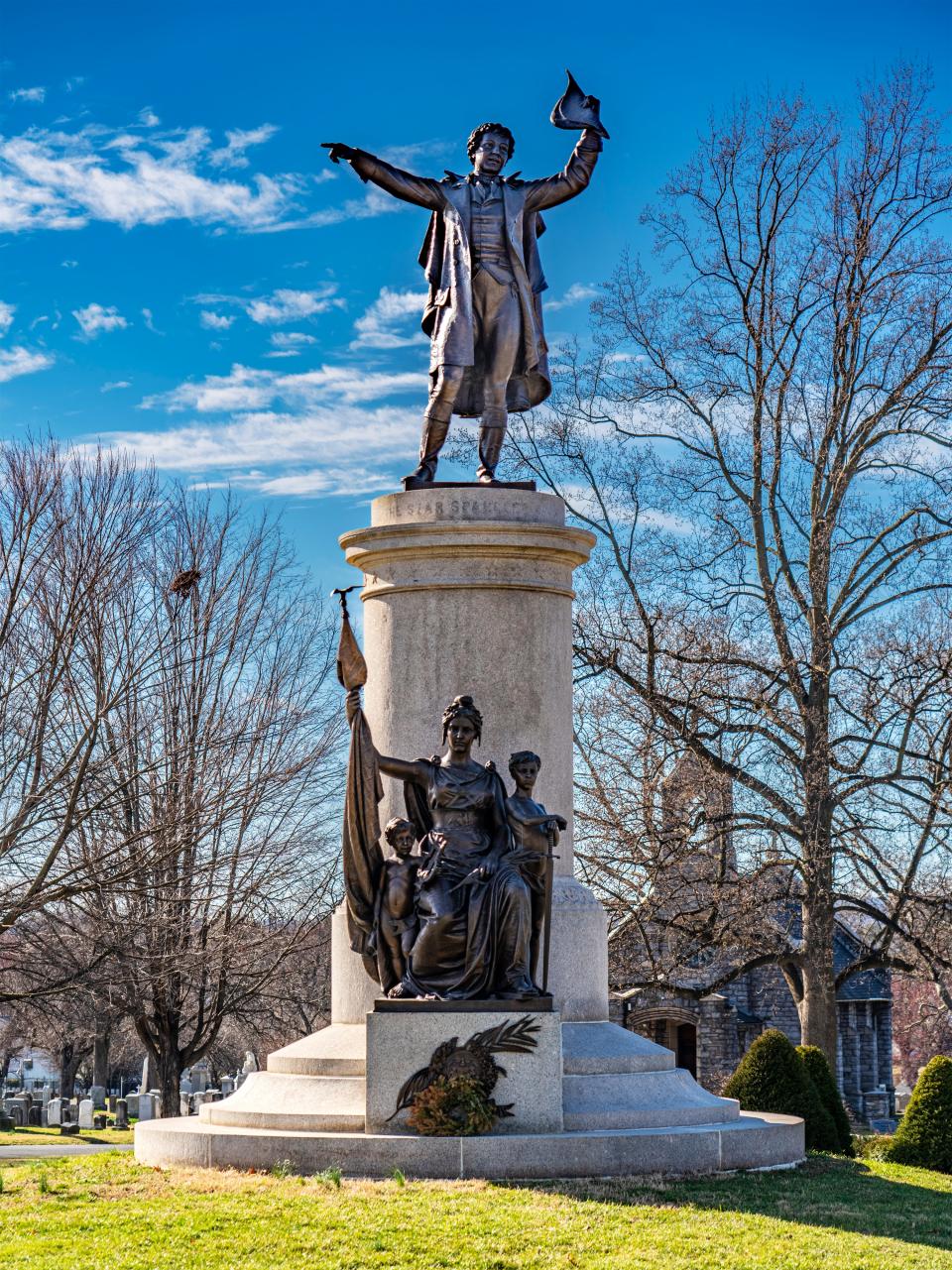Who is Francis Scott Key? What to know about the namesake of collapsed Baltimore bridge

- Oops!Something went wrong.Please try again later.
The Francis Scott Key Bridge in Baltimore, Maryland collapsed Tuesday into the Patapsco River after it was struck by a large cargo ship.
The bridge's collapse has prompted a huge emergency response for missing people. The Baltimore City Fire Department described the collapse as a mass-casualty incident.
Multiple local, state and federal agencies are coordinating the massive search and Maryland Gov. Wes Moore has declared a state of emergency. Moore said he is working with an interagency team to "quickly deploy federal resources from the Biden Administration."
The bridge which crosses over the Patapsco River on I-695 and is the final link on the Baltimore Beltway, was named after Francis Scott Key, according to the Maryland Transportation Authority
Where is the Francis Scott Key Bridge?: What to know about collapsed Baltimore bridge
Who is Francis Scott Key?
The bridge's namesake was an attorney who wrote the lyrics of The Star Spangled Banner.
Key is believed to have witnessed the bombardment of Fort McHenry on the night of Sept. 12, 1814, within 100 yards of the modern-day bridge. That battle is what inspired him to write the national anthem.
According to the National Museum of American History, Key watched the 25-hour bombardment of Fort McHenry from aboard a British troopship. He was sent to the ship to negotiate the release of an American civilian who was imprisoned by the British and had been detained when the bombardment began.

The ship was docked just four miles away from the bombardment, NMAH said. When dawn came around, Key saw a flag flying over the fort, inspiring him to begin writing the famous lines of what is now our national anthem.
Key was born to a wealthy family in Frederick County, Maryland on August 1, 1779, according to a government site on Fort McHenry.
He grew up on a plantation called Terra Rubra, red earth that was supported by slave labor. His family was affluent and included lawyers and elected officials. At the time of the American Revolution, members of Key's family fought for and against the British.
In 1802, he married Mary Tayloe “Polly” Lloyd and they settled in Georgetown. The couple would go on to have 11 children.
Key's worked as a lawyer until his death
Key made his name in 1807 after defending Justus Eric Bollman and Samuel Swartwout. Bollman and Swartwout were charged with treason in connection to an alleged conspiracy made by Aaron Burr, one of the founding fathers.
He continued to work as an attorney until he died on January 11, 1843. Key died of pleurisy, a condition typically caused by bacterial or viral infections that causes chest pain that worsens during breathing.
From 1833 to 1841, he served as the District Attorney for the District of Columbia, according to government sites.
He also served as an advisor to Andrew Jackson.
Complicated history with slavery
In June 2020, a statue of Key in Golden Gate Park in San Fransisco was toppled by racial injustice protesters, Reuters reported.
The dislodging of Key's monument on Juneteenth, the holiday celebrating the end of slavery, came at a time of racial reckoning in the U.S.

Key had come from a slaveholding family and had bought slaves himself. According to the NPS, he most likely purchased his first enslaved person in 1800 or 1801. By 1820, Key owned six slaves.
However, in court, Key defended enslaved individuals seeking their freedom. At the same time, he also defended slave owners seeking to regain runaway “property” in several cases.
Reuters reported that historians believe the Star Spangled Banner also included a defense of slavery in the third stanza, where Key wrote about sending slaves to their graves.
This article originally appeared on USA TODAY: Who was Francis Scott Key? Details on namesake of Baltimore bridge

